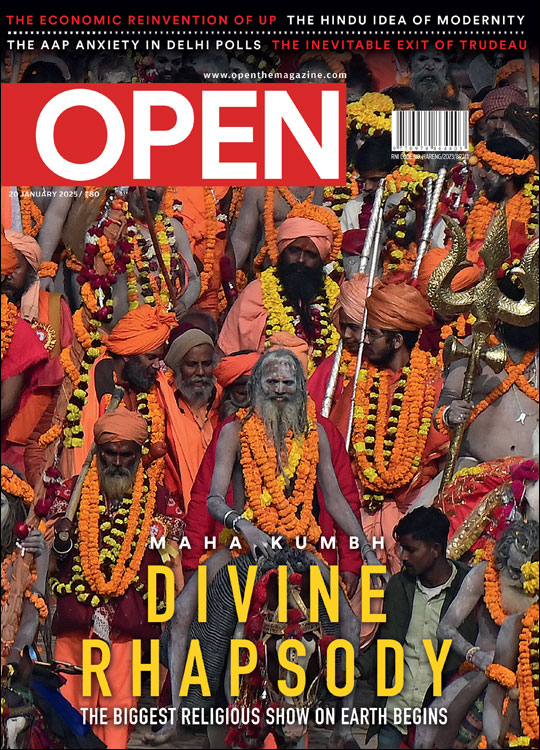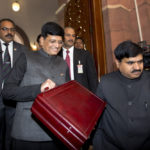Urjit Patel: Futile Fight
RBI Governor Urjit Patel’s rebellion will go nowhere
 TCA Srinivasa Raghavan
TCA Srinivasa Raghavan
 TCA Srinivasa Raghavan
|
08 Nov, 2018
TCA Srinivasa Raghavan
|
08 Nov, 2018
/wp-content/uploads/2018/11/UrjitPatel_0.jpg)
AS WINSTON CHURCHILL might have said, never have so many been so embarrassed by so few. For the last two weeks, the Government and the Reserve Bank of India (RBI) have been quarrelling publicly in the most unseemly and undignified manner. It is unclear who started the fight, but one thing is certain: the prestige of both has been severely dented.
Depending on whose side you are on, there are various versions available. One version is that the Government is trying to bully the RBI. Another is that the RBI is being obstinate on principles and not being sensitive to the need of the hour. A third version is that the RBI Governor is ignoring the Board’s wishes and that the Government has had to step in to make peace. A fourth is that since the Board knows which side its bread is buttered, it is no more than a proxy for the Government.
Whatever the truth—and it is likely to be a combination of all these things, plus egos of the Finance Minister and the Governor— the acutely discomfiting fact remains that what could have been sorted out quietly has now become a matter of politics as well as ignorant comment. Indeed, this has done more damage than what the RBI’s deputy governor said in a speech at the end of last month. He had said that if the independence of the RBI was abridged, it would have a ‘catastrophic’ effect on markets.
To show that it is not asking for too much and that it is certainly not interested in reducing the limits of the RBI’s independence, the Government has made public, via a careful leak, what it was going to ask for at the next Board meeting scheduled for November 19th. It thus cleverly steered the debate towards the merits of what it wants away from the independence issue that lies at the heart of the relationship between the two. This relationship is governed by a 1946 amendment to the RBI Act of 1934 empowering the Government to issue instructions to the RBI in the ‘public interest’. And there lies the rub: who determines what the public interest is?
To understand this, a little background is necessary. The 1946 amendment, incorporated as Section 7 in the RBI Act, was made because a similar amendment had been made to the Bank of England Act by the newly formed socialist government of Clement Attlee, which had nationalised the Bank of England.
In India, however, it was not socialism that caused the amendment. It was the experience of the previous decade where the RBI, then privately owned, had sometimes refused to do the Government’s bidding or created difficulties for it. The Viceroy’s Council was fed up with this assertiveness, and, wishing to bring the RBI to heel, it used the British amendment to amend the RBI Act.
The Introduction to the British law had said that it was ‘An Act to bring the capital stock of the Bank of England into public ownership and bring the Bank under public control, to make provision with respect to the relations between the Treasury, the Bank of England and other banks and for purposes connected with the matters aforesaid.’
The government owns the RBI and can get it to do whatever it want because it appoint the governor and deputy governors. Indeed, as we have seen since 1935, RBI’s ‘independence’ is national. Or, as one governor put it, the RBI is independent within the limits set by the government
Section 4 (1) of the British act said: ‘The Treasury may from time to time give such directions to the Bank as, after consultation with the Governor of the Bank, they think necessary in the public interest.’ The idea of sovereign power was thus explicitly injected into the financial sector.
But then the question arose: if something went wrong as a result of a direct order from the Government, who would take the blame? The British left it unclear, and in India, despite the insistence of the RBI that the Government should accept responsibility, the issue was never satisfactorily resolved. The only concession made by the Government was that it would not issue an order without ‘prior consultations’. Then in 1949 the Indian Government also nationalised the RBI because it too wanted to have control over money and banking, which was almost entirely in private hands.
But what is not clear is why, having nationalised the RBI, Section 7 was not deleted. After all, the Government owns the RBI and can get it to do whatever it wants because it appoints the Governor and deputy governors. Indeed, as we have seen since 1935, RBI’s ‘independence’ is notional. Or, as one Governor put it, the RBI is independent within the limits set by the Government. Therefore, the Government has always got its way. The fact that Section 7 has not been used so far means nothing.
When the Government wanted to raise the credit limit to Sanjay Gandhi’s Maruti from Rs 1 crore to Rs 2 crore in 1974 and the RBI refused, the Government simply appointed a pliant governor when the incumbent’s term finished. The same thing had happened thrice before in different contexts, once as early as 1937 when the first Governor was persuaded to resign within two-and-a-half years of being appointed. He, too, had refused to ‘cooperate’ and, indeed, had been quite outspoken, calling the Viceroy “a weak ass” once.
Section 7 is thus redundant because even without a pliant governor, if the Prime Minister says ‘please’, whatever the Government wants can get done. This has also happened several times since 1947. This is why the former Finance Minister P Chidambaram has been saying that reserve power is just that— reserve power which must never be used. But jousting between the Government and the RBI has always been brutal.
All that Prime Minister Narendra Modi needed to do was call Governor Urjit Patel and ask him nicely to do as the Finance Ministry was saying, and this fuss would never have happened. On the other hand, if he did do that and Patel has remained unmoved, well, then all bets must surely be off because you can’t defy a prime minister. As Nehru established way back in 1957, if forced to choose between a governor and the Finance Minister, the Prime Minister will always choose the latter. In the overall scheme of things, as one Finance Minister bluntly put it way back in 1956, the RBI is “just a subordinate department of the Government”.
The government-RBI relationship had been most pithily set out by governor of the bank of England Montagu Norman in 1931 who said it had to be like a ‘Hindoo marriage’ where the RBI was the wife—it should advise strongly but not insist beyond a point on its advice being taken
Also, Government-RBI relations have often boiled down to the egos of governors. The job is such that even easy-going men have turned into fierce votaries of independence, especially towards the end of their tenures—or if they were not seeking extensions. The best ones, however, have been the ones who have enjoyed an easy give-and-take relationship with the Finance Minister. But sometimes, as happened when Manmohan Singh was Governor in the first half of the 1980s, even that didn’t help. The Finance Ministry more or less ordered the RBI to give a licence to a foreign bank that went bust in 1991.
It all began in Sweden, though the English, typically, have put it about that the world owes the idea of central banks to them. The Swedish economy was pretty large in the mid-17th century by Europe’s pre-Industrial Revolution standards. It needed its money to circulate in order to finance its trade in mining and timber.
But there was a problem: its copper currency, the daler, comprised heavy plates measuring one foot by two feet and weighing several kilograms. The king needed a place to store these things. A smooth-talking Latvian called Johan Palmstruch convinced him that he would store the plates. The deal was that Palmstruch would set up the bank under a royal decree and in return would give the king half the profits. Palmstruch was a really smart man and soon introduced paper currency to represent the heavy copper plates. This money, he lent freely. Everything went swimmingly for a while and the Swedes lived in great luxury on borrowed funds. The more they borrowed, the more money Palmstruch and his shareholders made and everyone was happy. But then the king died and the Council that ran the kingdom till the young prince came of age devalued the daler by reducing the copper in it. This eventually led to a run on the bank and it was more or less nationalised. This is how the world’s first central bank was born and is called the Sveriges Riksbank today and awards the Nobel prizes in economics.
A little later, in 1688, England imported a Protestant king because Catholic sovereigns were forbidden. This imported king, called William III, found that he had no money, or at least not enough to finance an ongoing war.
So he asked the City of London, which comprised a bunch of moneylenders, for £1,200,000 and offered an extraordinary rate of 8 per cent as interest. But they said, ‘No, we don’t trust you.’ They all haggled a bit and eventually the moneylenders imposed a condition: the king would set up a bank whose chief, to be called ‘governor’, they would appoint. This bank would have exclusive control over all government money.
Basically, they wanted private control of public finances so that repayment was guaranteed. Not just that: the new bank would also issue notes, just in case it became necessary to get the money back that way.
The deal was that the moneylenders would give the government cash in the form of gold in return for bonds issued by the government. Then the Bank would issue notes against these bonds. These bonds would then be lent again, pretty much ad infinitum for as long as everyone believed that there was enough gold in the vaults. William raised the £1,200,000 and rebuilt the navy, which was then used to protect and expand the moneylenders’ interests because they financed English trade also. It was the most risk-free financing of war ever and eventually played a major role in the creation of the British Empire over the next 200 years.
IN DEMOCRACIES, POLITICS casts a very large influence on monetary policy. Ideally, all political parties would like to have lots of money and credit in the system at very cheap rates. Governments like to borrow at the lowest cost, which they like to determine. This was the British practice in India also and the Viceroy refused the RBI permission to raise interest rates from 1935 onwards. It was only in 1951 that a slight increase was allowed by the Nehru Government.
The justification for this sort of dominance was given when the RBI Governor explicitly conceded in 1966 that monetary policy had to keep in view “the larger economic objectives of the state”.
He was right. The Government-RBI relationship had been most pithily set out by the powerful Governor of the Bank of England, Montagu Norman, in 1931. He said it had to be like a ‘Hindoo marriage’ where the RBI was the wife—it should advise strongly but not insist beyond a point on its advice being taken.
But there is something about the chair of governor that makes them defy governments. The first Governor, Sir Osborne Smith, refused to do as bidden by the Government. In 1936, he wrote in a letter that he was ‘sick to death’ of the Government’s attempt to ‘dominate the RBI’. The final straw came when he called Viceroy Lord Linlithgow “a weak ass”. In July 1937, just two years after taking over as first Governor, he was forced to resign.
The irony was that he had been appointed, instead of some ICS officer or British banker, precisely to give the impression that the RBI was independent. And that’s been the story ever since. Even those who were appointed in the belief that they would serve the Government have rebelled.
So where do we go from this latest act of rebellion? Nowhere. Whether Urjit Patel stays or goes is not going to make any difference to the structure of the Government-RBI relationship. So be prepared for unending episodes on this 73-year-old serial. It will pause only for commercial breaks.

/wp-content/uploads/2025/01/Cover_Kumbh.jpg)













More Columns
The lament of a blue-suited social media platform Chindu Sreedharan
Pixxel launches India’s first private commercial satellite constellation V Shoba
What does the launch of a new political party with radical background mean for Punjab? Rahul Pandita